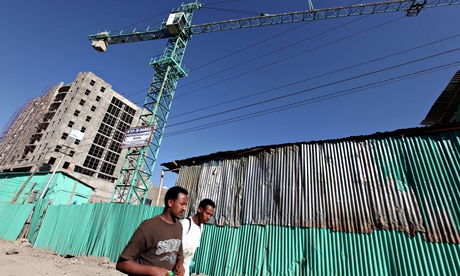
Welcome to the mother of all years for summits on international development. The 2015 calendar includes a major gathering in July in Addis Ababa, Ethiopia, on financing. After that the summit caravan will head to the UN general assembly in New York, where governments will adopt a new set of global development targets to replace the Millennium Development Goals (MDGs). The year closes with negotiations in Paris on a new climate change agreement.
Will any of this deliver meaningful change for poor people and the planet?
It’s hard to exaggerate the importance of that question. The central goal of the summits is to chart a course towards the eradication of extreme poverty, more equitable globalisation, and climate stability.
Our current direction of travel is not encouraging. Global inequality is reaching ever more obscene proportions. Almost 1 billion people live in extreme poverty. And while governments have pledged to restrict global warming to 2C above pre-industrial level, carbon-intensive energy systems are driving us towards a 4C world – an outcome that would lead to unprecedented reversals in human development.
The 2015 summits are linked. An ambitious agreement at the Addis financing conference will provide momentum for the dialogue on the sustainable development goals, which will in turn create an impetus ahead of the critical climate talks.
We are a long way from that virtuous circle. Preparations for the 2015 summits have been hampered by a paralysing lack of ambition, weak leadership, and the absence of a credible agenda to galvanise public engagement.
The proposed post-2015 development goals are part of the problem. What the world needs is a plan of action to replace the Millennium Development Goals. What’s on offer is a shopping list. The 17 goals and 169 targets cover everything from the urgent and measurable – eliminating poverty, cutting child deaths, universal provision of education, water and sanitation, and climate stability – to the vaguely aspirational (‘ensure the proper functioning of commodity markets’, whatever that means).
What is missing, apart from clarity of purpose, is a focus on inequality. Eradicating poverty by 2030 is a laudable objective. But current growth patterns are skewed against the poor and will leave 266 million below the $1.25 poverty line in Africa alone. Eliminating avoidable child deaths is a goal that should unite every country.
Unfortunately, malnutrition and unequal access to health services will on current trends leave us with 4 million such deaths in 2030.
In the case of education inequality has emerged as a brake on progress. The new goals envisage universal secondary schooling by 2030. Yet progress towards primary education for all has stalled with 57 million children out of school. Girls in rural Africa can look forward to universal schooling sometime after 2080 on current trends.
If governments want the sustainable development goals to have some credibility, they need to turn the policy spotlight on those who are being left behind. They could start by framing targets aimed at, say, halving wealth-based disparities in child survival and school attendance over the next five years.
Part of the challenge in Addis is to underpin a high level of ambition on development and climate with real financial resources. Four priorities stand out.
The first is to put poverty at the heart of the agenda. Learning from the experience of the global fund for HIV/Aids, the summit provides an opportunity to mobilise support for initiatives aimed at delivering universal health coverage, education, and social protection.
Taking into account the fiscal capacity of governments in developing countries, it would take around $75bn (£49.44bn) to finance the cash transfers needed to lift people to the $1.25 extreme poverty line, fund a basic health package and get all children in school. To put this figure in context, acting on the commitment to invest 0.7% of OECD income in aid would generate $184bn.
Of course, there is more to the aid challenge than money. Much of the increase in aid is needed in around 50 of the very poorest countries, many of them affected by conflict. These countries currently receive one-fifth of the aid per person as richer developing countries. Meanwhile, as the current crisis in Syria has highlighted, the humanitarian system is unfit for the purpose of supporting desperately vulnerable refugees.
The second priority is to strengthen international cooperation in areas where much has been promised, but little delivered. Infrastructure financing, a major constraint on growth, is a major gap in the current financing system. So is the absence of enforceable rules on tax evasion and illicit transfers. Sub-Saharan Africa alone loses $68bn – more than the region receives in aid.
Third, the Addis summit provides an opportunity to link the poverty and climate agendas. Cutting consumption subsidies for fossil fuels is a starting point. Indonesia has just used the saving from the country’s fuel subsidy programme to fund an initiative that provides cash, health and education support to 15 million households.
Others should follow suit.
The G20 countries could provide leadership. Currently, they spend some $88bn subsidising exploration for new fossil fuel reserves. Exploiting these reserves will guarantee dangerous climate change. In effect, taxpayer’s money is being used to finance mutually assured destruction through dangerous climate change. Yet several countries – including the UK – are increasing tax breaks for oil exploration.
Achieving a successful outcome in 2015 will not be easy. We do not live in the best of times for international co-operation. Yet the summits provide an opportunity to build the coalitions needed to address some of the defining challenge of our day – and to restore the credibility of multilateralism.
• Kevin Watkins is director of the Overseas Development Institute

